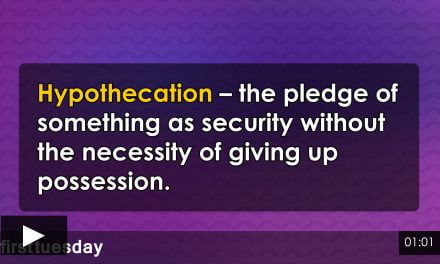This is the first episode in our new video series covering easements. This episode introduces the tenement relationship between two parcels of real estate created by an easement.
Easements for ingress and egress
An easement
“Easement” is an Anglo-Norman term coined in the late 14th century. It comes from the Old French word aisement meaning “comfort, convenience, use and enjoyment” and from aisier meaning “to ease.” The current meaning of the word, which is the legal right of one property owner to use the property of another, was first used in the early 15th century.
The most common easement is used for ingress and egress. An easement for ingress and egress creates a right of way allowing one property owner to traverse a portion of another’s land to access their property.
Consider a right-of-way easement which is maintained as a road over an owner’s property. The easement provides access through the owner’s property from a public street to an adjoining neighbor’s property.
The owner builds a fence on their entire property line, blocking the neighbor’s use of the road and access to the public street in the process.
The neighbor with the property benefitting from the easement claims their easement gives them the right to use the roadway across the owner’s property, a use the owner may not interfere with by fencing the perimeter of their property and barring the neighbor’s use of the easement.
The neighbor demands the unobstructed use of the road and seeks to recover money losses incurred due to the owner’s obstruction.
Is the owner wrongfully blocking the neighbor’s use of the road?
Yes! The neighbor in title to the adjacent property holds a valuable property right in the owner’s property which entitles the neighbor to use the right-of-way easement, classified as an appurtenance to the neighbor’s property and an encumbrance on the owner’s title.
When an owner whose property is burdened by an easement interferes with the use of the easement by a neighbor whose property benefits from the easement, the neighbor is entitled to have the use of the easement reinstated, either by removal, relocation or modification of the interference.
Further, the neighbor who holds the easement is entitled to compensation for their money losses caused by the owner’s obstruction of the neighbor’s use of the easement. [Moylan v. Dykes (1986) 181 CA3d 561]
An easement creates a tenement relationship between two parcels of real estate since it:
- benefits one property, referred to as the dominant tenement, whose owner is entitled to use the easement; and
- burdens another property, referred to as the servient tenement, the owner’s use of their property being subject to the easement.
Related video:














